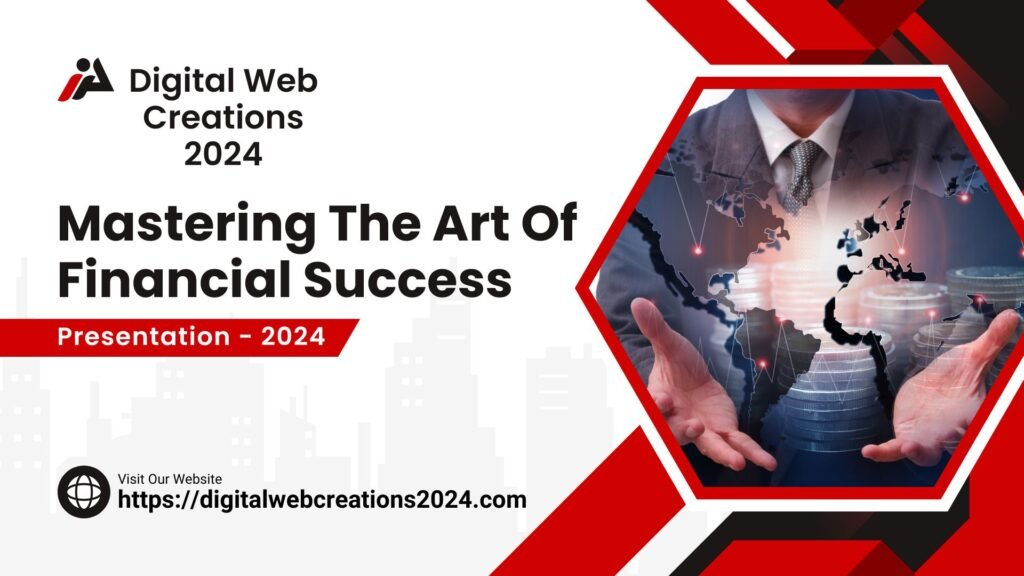Certainly! Here’s a blog post on web design:
Mastering the Art of Web Design: Creating Digital Experiences That Wow
In the vast and ever-evolving landscape of the internet, where attention spans are fleeting and competition is fierce, a well-crafted website can be the difference between success and obscurity. Web design, the art of creating visually appealing and user-friendly websites, plays a pivotal role in engaging visitors, conveying brand messages, and driving conversions. Let’s delve into what makes great web design and how you can harness its power to craft compelling digital experiences.

The Foundations of Effective Web Design
At its core, web design blends aesthetics with functionality. It’s not just about making a site look pretty; it’s about creating an intuitive and seamless user experience (UX) that guides visitors through the content effortlessly. Here are some foundational elements:
1. Responsive Design: In today’s mobile-centric world, responsive design is non-negotiable. Websites must adapt seamlessly to different screen sizes and devices to ensure a consistent experience for users on smartphones, tablets, and desktops alike.
2. Visual Hierarchy: Guiding users’ attention through visual cues such as contrast, size, and spacing helps prioritize content. Important elements like calls-to-action (CTAs) should stand out while maintaining harmony with the overall design.
3. Navigation: Intuitive navigation is key to keeping visitors engaged. Clear menus, breadcrumbs, and search functionalities simplify the journey, making it easier for users to find what they’re looking for.
4. Loading Speed: Slow loading times frustrate users and negatively impact SEO. Optimizing images, minifying code, and leveraging caching techniques are essential for improving site performance.
The Role of Aesthetics in Web Design

While functionality is paramount, aesthetics play a crucial role in capturing attention and evoking emotions. Here’s how design elements contribute to the overall appeal:
1. Color Scheme: Colors evoke specific emotions and associations. Choosing a cohesive color palette that aligns with your brand identity can enhance visual appeal and convey the right message to visitors.
2. Typography: Fonts should be legible and consistent across different devices. Mixing serif and sans-serif fonts can add variety while maintaining readability.
3. Imagery and Graphics: High-quality images, videos, and graphics enhance storytelling and engage users. Custom illustrations or photography can set your website apart and reinforce your brand personality.
Designing for User Experience (UX)
User experience encompasses every interaction a visitor has with your website, from the moment they land on the homepage to when they complete a purchase or contact form. Here are key principles to enhance UX:
1. User-Centered Design: Understanding your target audience’s needs and preferences is fundamental. Conducting user research, creating user personas, and testing prototypes ensure your design resonates with your users.
2. Accessibility: Designing with accessibility in mind ensures that everyone, including users with disabilities, can access and navigate your site. Features like alt text for images and keyboard-friendly navigation benefit all users.
3. Usability: Simple, intuitive interfaces reduce cognitive load and frustration. Conduct usability tests to identify pain points and optimize user flows.
Trends and Innovations in Web Design

Web design is constantly evolving, driven by technological advancements and changing user behaviors. Staying updated with current trends can keep your website fresh and competitive:
1. Minimalism: Clean, clutter-free designs with ample white space create a modern and sophisticated look.
2. Dark Mode: Offering a dark theme option reduces eye strain and caters to users’ preferences.
3. Microinteractions: Small animations or feedback loops (like button hover effects) make interactions more engaging and memorable.
4. Voice User Interface (VUI): As voice search and smart assistants become mainstream, designing interfaces that accommodate voice commands will become increasingly important.
The Business Impact of Effective Web Design

Beyond aesthetics and functionality, a well-designed website can drive tangible business outcomes:
1. Brand Perception: A professionally designed website instills trust and credibility, shaping how visitors perceive your brand.
2. Conversion Optimization: Thoughtfully placed CTAs, compelling content, and seamless checkout processes increase conversion rates and revenue.
3. SEO Benefits: Search engines favor user-friendly websites with fast load times and mobile responsiveness, contributing to higher search rankings.
Conclusion
In the digital age, your website is often the first point of contact between your brand and potential customers. Investing in exceptional web design isn’t just about aesthetics; it’s about creating meaningful connections and delivering exceptional user experiences. By blending creativity with usability, staying abreast of industry trends, and prioritizing user needs, you can craft a website that not only captivates visitors but also drives business growth in a competitive online landscape.
Remember, great web design is a journey, not a destination. Continuously solicit feedback, analyze performance metrics, and evolve your design to stay ahead of the curve and leave a lasting impression on your audience.

